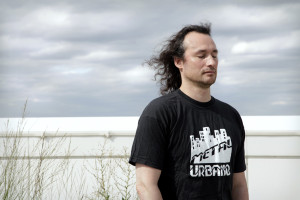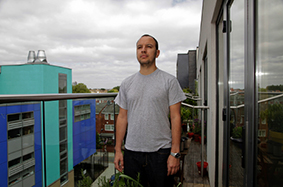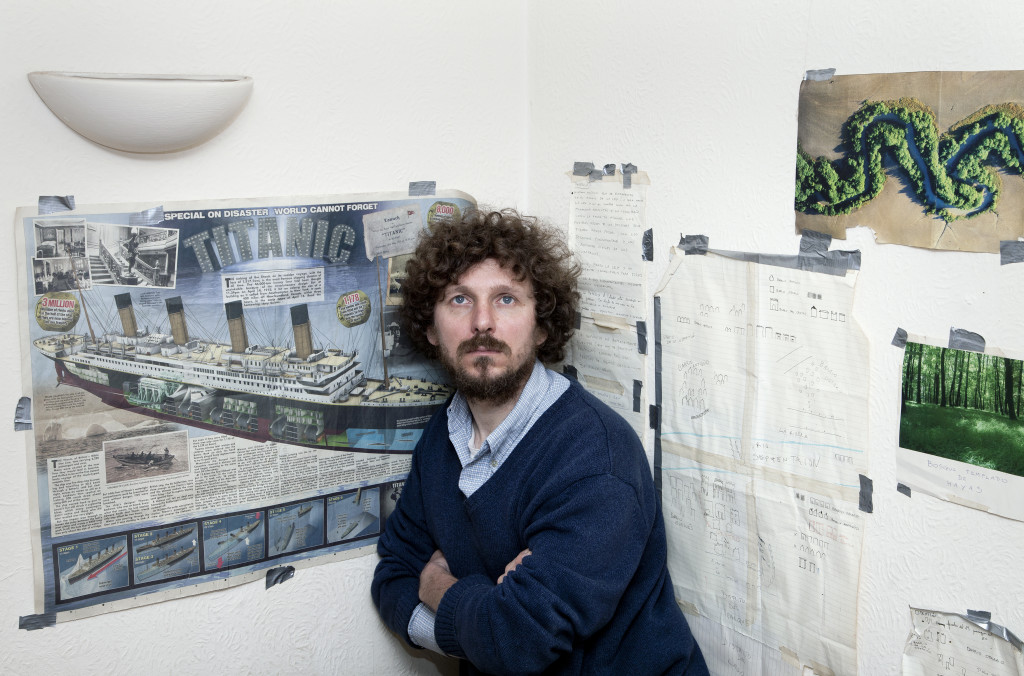
Mario, Haiti.
UNCOVERING THE INVISIBLE
Portraits of Latin Americans in the UK
Uncovering the Invisible: Portraits of Latin Americans in the UK is a project that focuses on the diversity of backgrounds and life stories of the people that build this community and means to shed light upon an ethnic group that has remained almost invisible but which contributes both economically and culturally to the shaping of British society.
The results of this project were shown during the world championship soccer in Brazil in City hall in London. It is worth to show it more often.
The story of the project:
Photographers Pablo and Roxana Allison were born in Manchester (United Kingdom). Their Mexican mother and English father decided to migrate to Mexico City in the in the early 80’s – when they were both still very young – due the country’s circumstances under Thatcherism.
Although they embraced Mexican culture, their daily life was splashed with elements from both of their roots making their home a peculiar one. For instance, they spoke English with their dad and Spanish with their mum. However, no matter how much they loved Mexico, the idea of returning to Britain was constantly in the back of their minds.
They soaked themselves into Mexico when hanging out with friends or at the state schools they attended. That is when they really had the opportunity to taste the many flavours of Mexico’s culture, to perceive its contrasts, inequalities and warmth.
Pablo was the first to migrate in 2002 whilst Roxana finished her degree in Fine Art at the National Autonomous University of Mexico. She later followed her brother’s steps and flew to England in 2008, at the peak of the economic crisis.
After a couple of years of living in Manchester and trying to blend in, she felt the need to meet people with similar cultural backgrounds. It didn’t take her long to bump into people from Latin America. This allowed her to feel closer to home and to discover that she identified a lot more with Latin American culture than she had thought. It sparked her interest in learning more about this part of the world and the idea for teaming up with Pablo to work on a photographic project started to emerge.
Pablo returned to the UK after living in Mexico for almost 18 years. He wanted to come back to understand more about the culture and compare the differences between London and Mexico City.
His first encounters with Latin American people were in West London. He remembers standing by the tube platform in West Acton station when he suddenly heard a young couple speaking Spanish.
I was quite surprised about it so I asked them where they were from and they replied, – we are from Ecuador. After a few minutes of exchanging similar experiences I jumped on the train with a few questions in my mind such as, – What were they doing in London? What made them leave Ecuador? Or if they had fully adjusted to life in this country?
Since it’s so common for Latin Americans to migrate to the USA in search of a better life it was pretty interesting to know of a Latin American community slowly establishing itself in a European country that offered better opportunities than back home.
Years later Pablo observed that more and more Latin Americans were coming to London to find work. For instance, during his years at university he would walk around what is known today as the Latin American hub down in Elephant and Castle in south London. He noticed Latino businesses were suddenly opening. Some selling food from Colombia, Ecuador, Peru or Bolivia whilst others offered hair cut services or small cafes and shops selling Latin American products were emerging too.
Pablo started collaborating with Latin American organisations in London in 2011 aiming to connect more closely with his roots and to contribute towards the organisation’s’ aims. At the same time Roxana found herself thinking about her cultural identity and her sense of belonging.
The Latin American population has grown enormously, particularly for the past 10 years, especially since 2008 when the recession kicked in. People from Colombia, Ecuador, Argentina, Brazil, Bolivia, etc. have been migrating from Spain or Italy where they had once found a home and a better quality of life than back home, though due to financial issues they have been forced to relocate and find a new place to live in the UK.
It is estimated in the ‘No Longer Invisible’ report by Cathy McIlwaine (Queen Mary University of London) released in 2011, that over 113,500 migrants from all across Latin America have established themselves in London alone (186,000 in the UK). The total estimate makes it a significant sector with regards to the city’s total population, making it comparable in size to that of the Polish community (122,000) for instance.
The population is also growing rapidly having increased four-fold since the 2001 census. The largest group are Brazilians followed by Colombians, Ecuadorians, Bolivians and Peruvians.
Although Latin Americans are employed in all spheres of the UK’s labour market, as the portraits illustrate, the majority are unable to fully utilize their professional skills. More than half are employed in low-skilled and low-paid jobs in cleaning, catering and hospitality services, despite previous careers in teaching, accountancy, engineering and social work. In turn, over 40% of Latin Americans experience workplace abuse and exploitation.
Again reflected in the portraits, while some sections of the community have settled successfully, others face multiple obstacles to their integration. For some legalizing their immigration status in this country is central to overcoming many of the challenges they face such as workplace abuse and accessing public services. Other key concerns include English language difficulties, concentration in jobs with low prospects of social mobility, poor housing conditions, and exclusion from social, health and welfare services. Nevertheless, the community has established the first steps to its official recognition in the boroughs of Southwark and Lambeth, London.
The portraits’ main goal is to support and help towards the official recognition of this community and to expose and acknowledge their presence in the UK in order to reach equal opportunities, access to services and representation in parliament with the aim to improve their quality of life in the country they now call home.
* With extracts from No Longer Invisible: The Latin American Community in London by Cathy McIlwaine, Queen Mary University of London
Copyright: the photographers.




